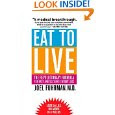
Young at Art by Susan Striker
"When babies are developmentally ready to stand and walk, they can pull themselves up on the nearest piece of furniture and go. But when babies are developmentally ready to begin the scribbling experiments that will lead the way to reading and writing later on, they need a sensitive adult to have a crayon and paper ready for them." This is the first sentence in Ms. Striker's book Young at Art : "Teaching Toddlers Self-Expression, Problem-Solving Skills and an Appreciation for Art". If you have heard of the "Anti-Coloring Book" that came out in the '80's then you are familiar with Susan Striker's work. I believe in her ideas/philosophy whole-heartedly but as with anything that requires a complete overhaul in our thinking and our expectations there is a lot of resistance and long years of habit to overcome.
When I taught preschool I followed the principles:
The same basic art materials were available every day:
Paper and crayons, markers, pencils
Easel Paper and Paint and brushes
Collage materials and glue
Clay
The first few months of school the kids are so shocked at being able to explore these materials unmolested every time them come to "school"that there is really not any need to add any auxiliary materials or suggestions.

Then you can start setting activities up to mix colors, make tints, explore shapes and textures etc.
We never made anything "cute" so that we would have a nice "display".
We hung the art prominently in the room.
We never wrote a child's name on their art without their permission and asking them where to write it.
We asked children to tell us about their art or what they were doing or feeling but we never asked "What is it?"
We never used coloring sheets or coloring books.
We had "real" art books and prints of "real" paintings hung in our room.
Here are Ms. Striker's 10 Cardinal Rules for Teaching Creative Art
1. Obliterate your own expectations of how an art project should be completed, and let the child’s imagination decide how the art materials will be used.
2. Never draw, paint or write on a child’s art work.
3. Never point out accidental similarities to realistic objects.
4. Never show a child “how” to draw or entertain a child by making realistic pictures.
5. Don’t ask “What is it?” or “What are you making?” “What” it is is not as important as “How” it is being made.
6. Never give a child coloring books, dot to dot, magic paint with water, molds, drawing machines, drawing computers or similar anti-art toys.
7. Never encourage children to participate in art contests or other forms of competition that pits child against child.
8. Encourage a child to come up with many different solutions to problems, rather than only one correct answer.
9. Don’t scold for drawing on unacceptable surfaces. Offer paper and say “Oh good, I see you feel like drawing.”
10. Do not rush a child to the next level of development.
Here's another quote from Ms. Striker: : "Many day care centers and nursery schools persisit in having one-to-four-year-olds make things like pumpkins for Halloween and Santas for Christmas, thereby squelching normal development, perpetuating our mundane stereotypical expressions and trivializing our feelings for meaningful holidays. they are also producing students who are insecure about the value of their own art. Often these children are destined for later reading and writing difficulties. In fact, children up to age of six are motivated to produce art be the size,shape,texture and possiblities of the materials. Adults are more likely to be motivated by subject matter, and therein may lie the great failure to communicate that separates children and adults, and ultimately serves to separate children from art. The sad fact is that although art eachers must take English, history, math and science courses to become certified, it is possible in many areas to become a certified eary childhood teacher without ever taking an art course. You may fid that your child is being taught art by a teacher who know absolutely nothing about it. If that happens, please speak up. After all, you would not tolerate a person who could not play a piano giving piano lessons to your child."
OH WOW!!! We early childhood professionals need to educate ourselves about providing early art experiences. Just like early language experiences, those first scribbles are the beginning of how the child will think and feel about learning and creating for their whole life. Our job is not to prepare them for school but to give them enough confidence and faith in their own abilities, thinking and problem-solving so that they will be able to withstand the relentless molding into conformity that takes place in 12 years of "schooling". We (early childhood professionals) can stand as a bulwark around the infants (0-4 yrs.) in our care, support their creative thinking and learning,and keep that creativity from being stifled or trampled for as long as possible.
Comments??










